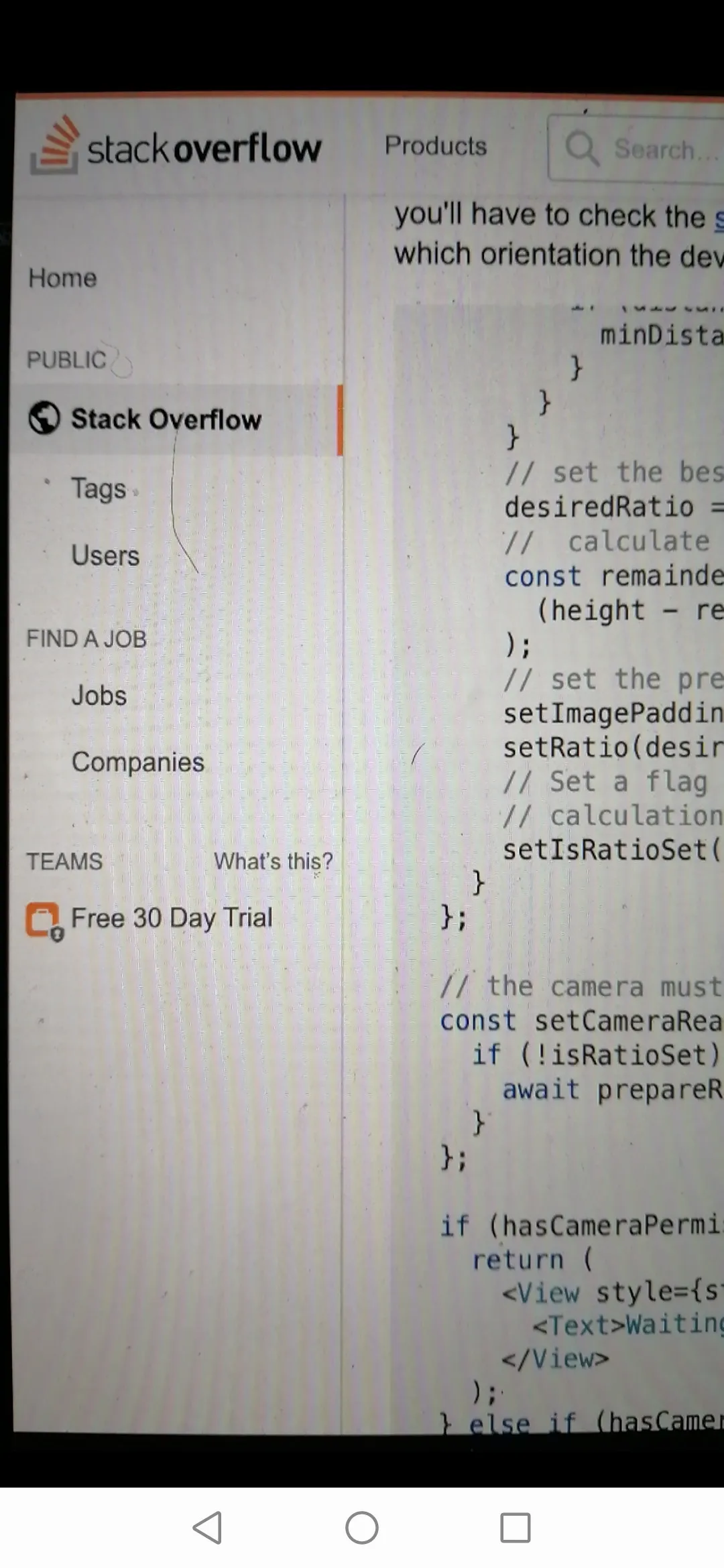我正在使用来自expo包的相机,并且在处理相机预览失真方面遇到了问题。预览会使图像在横向视图中变宽,在纵向视图中变窄。我发现的大多数解决方案都没有使用expo-camera。
相关代码:
camera.page.js:
import React from 'react';
import { View, Text } from 'react-native';
import { Camera } from 'expo-camera';
import * as Permissions from 'expo-permissions'
import { Platform } from 'react-native';
import styles from './styles';
import Toolbar from './toolbar.component';
const DESIRED_RATIO = "18:9";
export default class CameraPage extends React.Component {
camera = null;
state = {
hasCameraPermission: null,
};
async componentDidMount() {
const camera = await Permissions.askAsync(Permissions.CAMERA);
const audio = await Permissions.askAsync(Permissions.AUDIO_RECORDING);
const hasCameraPermission = (camera.status === 'granted' && audio.status === 'granted');
this.setState({ hasCameraPermission });
};
render() {
const { hasCameraPermission } = this.state;
if (hasCameraPermission === null) {
return <View />;
} else if (hasCameraPermission === false) {
return <Text>Access to camera has been denied.</Text>;
}
return (
<React.Fragment>
<View>
<Camera
ref={camera => this.camera = camera}
style={styles.preview}
/>
</View>
<Toolbar/>
</React.Fragment>
);
};
};
styles.js:
import { StyleSheet, Dimensions } from 'react-native';
const { width: winWidth, height: winHeight } = Dimensions.get('window');
export default StyleSheet.create({
preview: {
height: winHeight,
width: winWidth,
position: 'absolute',
left: 0,
top: 0,
right: 0,
bottom: 0,
paddingBottom: 1000,
},
alignCenter: {
flex: 1,
alignItems: 'center',
justifyContent: 'center',
},
bottomToolbar: {
width: winWidth,
position: 'absolute',
height: 100,
bottom: 0,
},
captureBtn: {
width: 60,
height: 60,
borderWidth: 2,
borderRadius: 60,
borderColor: "#FFFFFF",
},
captureBtnActive: {
width: 80,
height: 80,
},
captureBtnInternal: {
width: 76,
height: 76,
borderWidth: 2,
borderRadius: 76,
backgroundColor: "red",
borderColor: "transparent",
},
});
我该怎么做才能修复这个问题?
